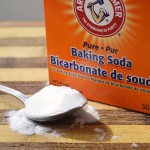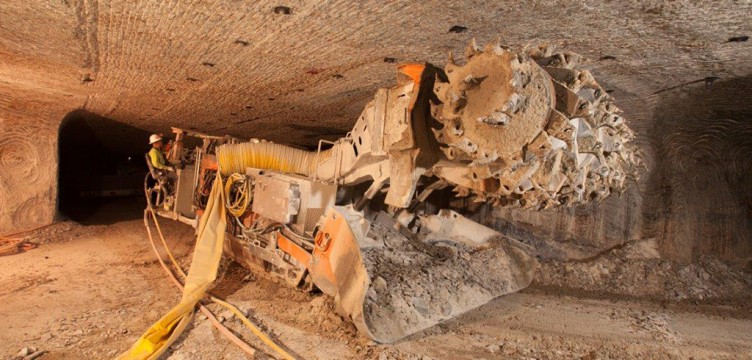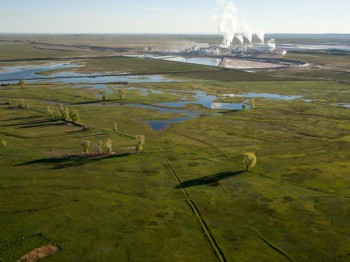Trona is a sodium carbonate compound that is processed into soda ash or bicarbonate of soda, or baking soda, as it is commonly known. Wyoming has the world’s largest deposit of trona, supplying about 90% of the nation’s soda ash. This mineral is Wyoming’s top export and is shipped to markets around the globe. Wyoming mines produced over 17.4 million tons of trona and employed 2,225 people in 2018.
2023 Wyoming Trona Production and Employment
The U.S. Geological Survey in 1997 estimated the total reserve of trona to be 127 billion tons, but only 40 billion tons are recoverable. At the current rate of operation, Wyoming’s reserves of trona will last 2,350 years. According to the Wyoming Geological Survey, Wyoming mines have produced over 633.2 million tons of trona since 1949.
Glass making consumes about half of the soda ash, followed by the chemical industry, which uses about a quarter of the output. Other uses include soap, paper manufacturing, and water treatment, and all baking soda comes from soda ash, which means you probably have a box of Wyoming trona product in your kitchen.
Origin
The deposition of trona in Wyoming started about 50-60 million years ago during the Eocene Age in the Wilkins Peak Member of the Green River Formation. A large freshwater lake, Lake Gosiute, covered an estimated 15,000 square miles in a basin in southwestern Wyoming. The lake was fairly shallow and evaporated rapidly and repeatedly creating a climate that changed back and forth between humid and arid, trapping the once abundant life.
All the minerals and mud settled in the bottom of the lake and sodium, alkaline and bicarbonate, were transported to the lake by runoff water. The mixture of all these elements formed the trona deposits we mine today.
Large trona deposits are found in the Green River formation with 42 beds that cover about 1,300 square miles.
Trona Facts
- 16.6 million tons of trona mined in 2023.
- 2,397 – Employees in 2023.
- The Federal Reserve Board uses soda ash as a national economic indicator.
- 5,000 years ago the Egyptians used soda ash for making glass ornaments and vessels.
- Trona is Wyoming’s top international export.
- At the current rate of operation, Wyoming’s trona reserves will last over 2,000 years.
Mining & Processing
All trona is mined underground and then processed into soda ash or baking soda. An underground trona mine is like an underground city. There are maintenance shops, bathrooms, electricity lines, and streets.
Most trona is mined through a room-and-pillar system where a series of parallel drifts are driven. Connections are made between the drifts at regular intervals, which creates a checkerboard pattern of rooms and pillars. The pillars are left to support the overlying rock, and the mineral is then cut from the mining face and processed.
The purification process begins with crushing the ore, which is then heated to drive off unwanted gases. This transforms the trona into a sodium carbonate. Water is added to this substance, which is then filtered to remove impurities. The water is evaporated and the resulting slurry is placed into a centrifuge to separate the remaining water from the soda ash crystals. The crystals are then sent to driers, screened, and sent to storage bins for transport.
Uses
 In the 1st century, the Romans used soda ash for making bread, glass, and medicine, uses which continue today.
In the 1st century, the Romans used soda ash for making bread, glass, and medicine, uses which continue today.
Baking soda and baking powder both come from soda ash, so most Americans have a product of Wyoming trona right in their own kitchens. These two common household substances are important ingredients for making bread, cookies, cakes, and other baked foods. You eat this Wyoming rock every time you bite into a sandwich, peanut butter cookie, or chocolate cake.
 Soda ash is also used to manufacture many chemicals used in industry including sodium bicarbonate, sodium chromates, sodium phosphates, sodium silicates, and sodium cyanide. It can also be added to adjust the pH of water and reduce acidity.
Soda ash is also used to manufacture many chemicals used in industry including sodium bicarbonate, sodium chromates, sodium phosphates, sodium silicates, and sodium cyanide. It can also be added to adjust the pH of water and reduce acidity.
Cattle feed, swimming pool products, medicines, paper, textiles, and toothpaste all use soda ash.


